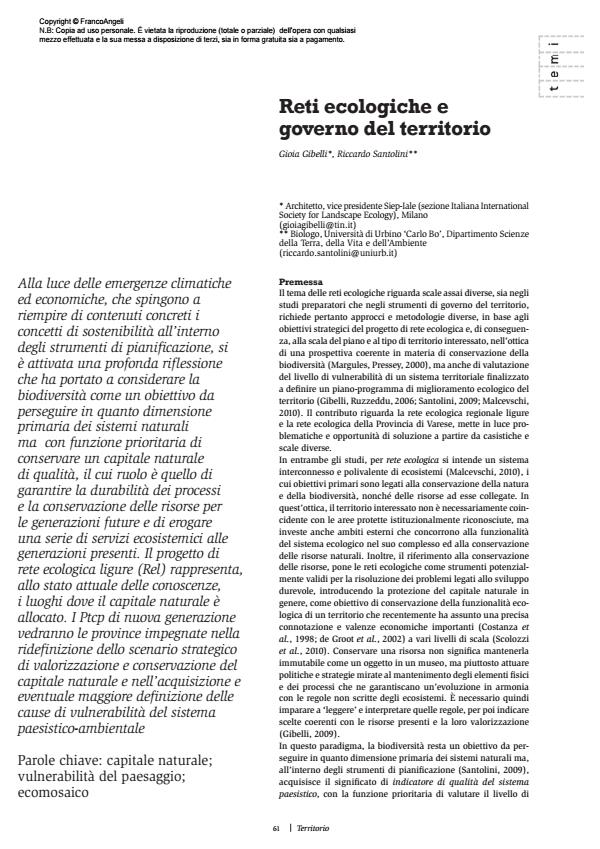Ecological networks and governance of the territory
Journal title TERRITORIO
Author/s Gioia Gibelli, Riccardo Santolini
Publishing Year 2011 Issue 2011/58
Language Italian Pages 14 P. 61-74 File size 1446 KB
DOI 10.3280/TR2011-058009
DOI is like a bar code for intellectual property: to have more infomation
click here
Below, you can see the article first page
If you want to buy this article in PDF format, you can do it, following the instructions to buy download credits

FrancoAngeli is member of Publishers International Linking Association, Inc (PILA), a not-for-profit association which run the CrossRef service enabling links to and from online scholarly content.
In the light of climatic and economic crises which drive us to fi ll the concepts of sustainability in planning instruments with concrete contents, deep reflection commenced which has led us to consider biodiversity as an objective to pursue as a primary dimension of natural systems, but with the prioritised function of conserving a natural capital of quality, the role of which is to guarantee the durability of the processes and the conservation of the resources for future generations and to deliver a series of eco-systemic services to current generations. The Liguria Ecological Project represents, at the current state of the art, the places where natural capital is allocated. The new generation of Provincial Territorial Co-ordination Plans will see provincial government administrations working to redefine strategic scenarios to enhance and conserve natural capital and to understand and more accurately define the causes of the vulnerability of the landscape-environment system.
Keywords: Natural capital; landscape vulnerability; eco mosaic
- Urban Standards and Ecosystem Services: The Evolution of the Services Planning in Italy from Theory to Practice Anna Maria Colavitti, Alessio Floris, Sergio Serra, in Sustainability /2020 pp.2434
DOI: 10.3390/su12062434
Gioia Gibelli, Riccardo Santolini, Reti ecologiche e governo del territorio in "TERRITORIO" 58/2011, pp 61-74, DOI: 10.3280/TR2011-058009